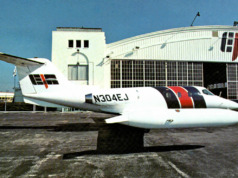1964 was a landmark year on many fronts. While the Beatles launched their first world tour and topped American music charts with “I Want to Hold Your Hand,” the General Aviation Manufacturers Association reported the first turboprop and jet aircraft deliveries to end users.
And Bell Telephone – at the time the only telephone company in the U.S. – introduced its iconic tag line for direct, long distance calling, “It’s the next best thing to being there.”
The juxtaposition of those two latter events carries some significance in 2019. While direct long distance calling enabled “I” contact with family, friends, and business associates, the business jet enabled “eye” contact with those folks in ways never before possible. Owners and charterers now could travel according to their own schedules, saving time, and enabling face-to-face meetings to close deals and build connections and trust – in complete privacy.
Privacy has followed a curious arc in recent years. In her new book, The Known Citizen, Sarah Igo traces its path from the Victorian Era’s “no one knows what goes on behind locked doors,” to today’s social media posting and boasting. Business has leveraged the modern individual’s desire to share product and service experiences, both written and visual, with friends and associates, by creating a virtual “town center” reality online.
That virtual reality is increasingly being used in aviation – for “touring” aircraft interior options, and for pilot training. Today’s technology uses virtual reality (VR) to recreate the sense of “being there” with the flight simulator: an accurate, up-to-date recreation of the flight deck of specific makes/models of aircraft. As you’ll read in our cover story Sim City, it’s not the 1990s home computer game. This fully-instrumented, full-motion training tool enables instructors to immerse pilots completely in any flight regime, and help them learn to handle almost any weather or mechanical challenge. As one leading aviation manager says, the instructor can “dial a disaster” so pilots encounter a full range of in-flight problems without endangering the aircraft or themselves.
Privacy and VR in aviation also have a downside – one that can put your safety as well as your money at risk. The unscrupulous can create a virtual online identity, and hide behind a fancy website using purloined photos, false credentials, and unearned expertise to sell charter to the unsuspecting. Until now, no license or certification was required for these so-called “bedroom” or “barstool” charter brokers to set up shop online. That all changes on February 14, when the U.S. Department of Transportation’s new charter broker regulations take effect. No more hiding behind an internet mask or smartphone app, as you’ll read in this issue’s DOT Matrix and Washington Report. Travel privacy may be desirable, but broker secrecy can be dangerous. You need “I” contact.
Thanks for reading!
Publisher of Business Aviation Advisor, has nearly 50 years in business aviation including executive positions at aircraft management/charter and ground services companies. He is a past director of the NATA and Corporate Angel Network.





